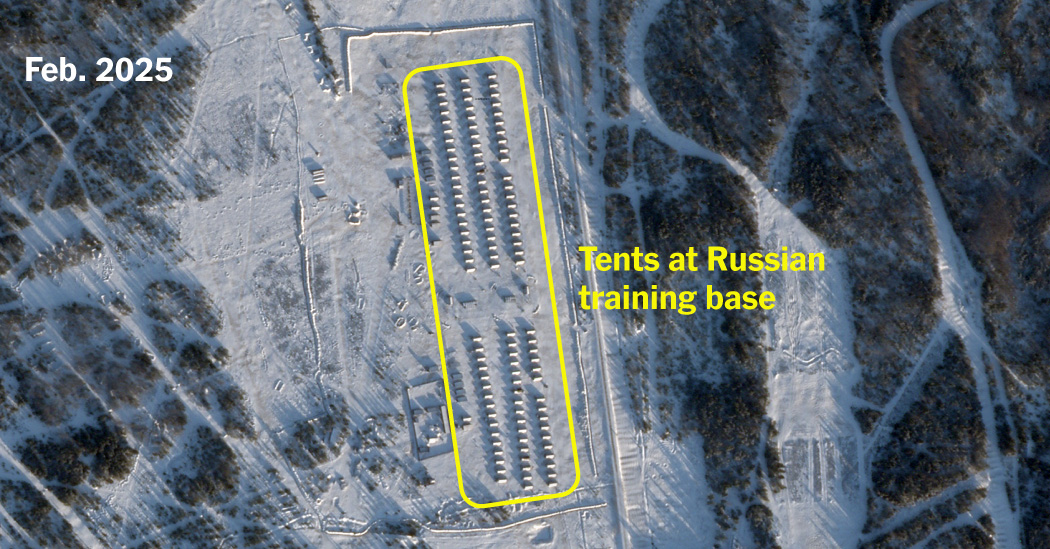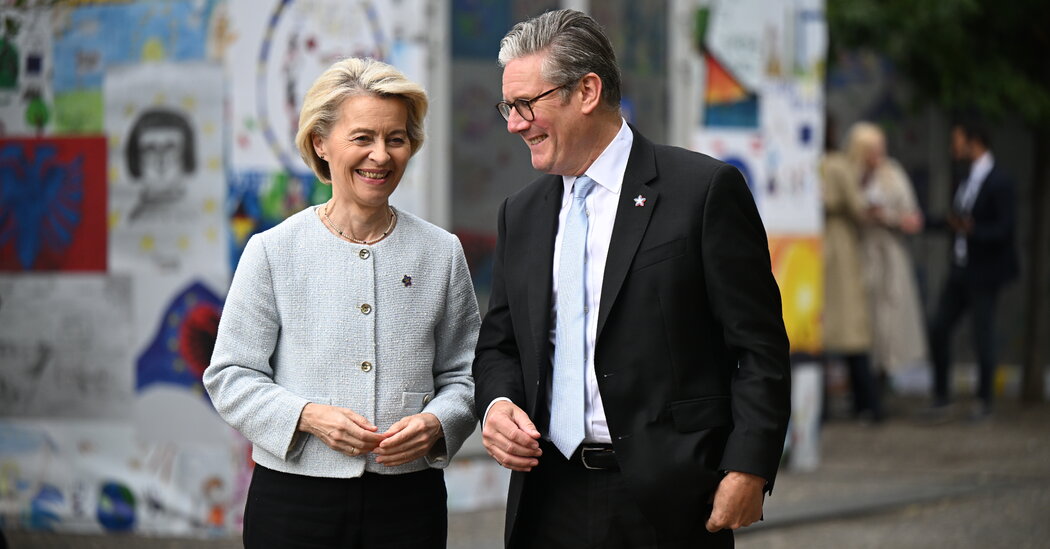Russian forces have been beefing up bases and building military infrastructure near the Finnish border, according to recent satellite imagery, in moves that could reveal their strategy for what happens after the Ukraine war.
The imagery, confirmed by NATO officials, shows row after row of new tents; new warehouses that can store military vehicles; renovations to fighter jet shelters; and steady construction activity on a helicopter base that had been mostly unused and overgrown.
So far the moves seem to be the early stages of a larger, longer-term expansion, and NATO officials say this is nothing like the buildup along the Ukraine border before Russia’s full-scale invasion in 2022. For now, Russia, preoccupied with its war in Ukraine, has very few troops along the frontier, and the Finns insist that none of this is much of a threat — yet.
But Finland is one of NATO’s newest members, joining two years ago, and the moves no doubt reflect Moscow’s own perception of a threat: This 830-mile frontier is now the Western alliance’s longest line of contact with Russia. Military analysts predict it could become a hot spot, especially with much of it lying in the increasingly contested Arctic Circle.
American and Finnish troops recently held an elaborate Arctic war game in this region, with hundreds of troops running around the woods and the Finns zipping through the trees on cross-country skis. The presumed enemy? Russia.
Finnish defense officials predict that if the high-intensity phase of the Ukraine war ends — one of the goals of the struggling peace efforts unfolding in Turkey — Russia will redeploy thousands of troops to the Finnish frontier.
The Finns think they have five years or so before Russia can build up its forces to threatening levels. But they are confident it will happen and that the number of Russian troops facing them will triple.
“We’ll be talking about so much higher troop levels,” said Brig. Gen. Pekka Turunen, the director of Finnish defense intelligence.
From Moscow’s perspective, the Russians need to bolster their defenses to protect themselves from NATO expansion, which has always been a sore subject. The Baltic nations were the first members of the former Soviet Union to join NATO, bringing large stretches of Russia’s border up against NATO’s. The prospect of Ukraine, an even bigger former Soviet republic, following suit was so threatening to Moscow that it became one of the causes of the most devastating land war in generations.
“The Russian military has undergone a significant force expansion,” said Michael Kofman, a senior fellow at the Carnegie Endowment for International Peace in Washington. “After the war, the ground force will probably end up larger than before 2022. Looking at the planned restructuring of military districts, it seems clear that they’re going to prioritize areas facing NATO.”
NATO officials agree.
Whenever the Ukraine war ends, one senior NATO official said, Russia would redeploy troops further and further to the north.
Russia believes that the Arctic and access in the Arctic is a key to great power status, the official said, speaking on condition of anonymity to discuss a sensitive topic.
According to satellite imagery, Russian helicopters returned to a base near Murmansk, a port city in the Arctic Circle, after they had not been there for two decades.
As Ukrainian drones target airfields across Russia, Russian command has moved assets north, to get out of range. This has put them much closer to NATO territory.
Dozens of Russian warplanes were recently spotted at the Olenya air base, also in the Arctic and fewer than 100 miles from the Finnish border, according to the satellite imagery. Other recent activity includes more than a hundred new tents that appeared about a year ago at Kamenka, a Russian base fewer than 40 miles from Finland.
“They are expanding their brigades into divisions, which means that the units near our borders will grow significantly — by thousands,” said Emil Kastehelmi, an analyst with the Black Bird Group, a Finnish organization that analyses the military developments in the north and in Ukraine.
Mr. Kastehelmi, who analyzed dozens of recent images for The New York Times, said that the next few years could bring massive changes to the Finnish frontier, depending on how and when the war in Ukraine ends.
At Alakurtti, which is also close to Finland, and Petrozavodsk, a little farther away, the Russians have new buildings that can house at least dozens of vehicles. Activity has also increased elsewhere. New tents and military equipment recently appeared at a base about 80 miles from Estonia.
The Finns have an old expression: Russia is never as strong as it looks and never as weak as it looks. So Finnish defense leaders have been characteristically matter of fact about the buildup.
“The increase of military force in our nearby areas will happen after the fighting in Ukraine quiets down,” said Janne Kuusela, the defense policy director at the Finnish Ministry of Defense.
How long that will take, he said, he doesn’t know.
But, he added, “That’s what we have to be prepared for.”


